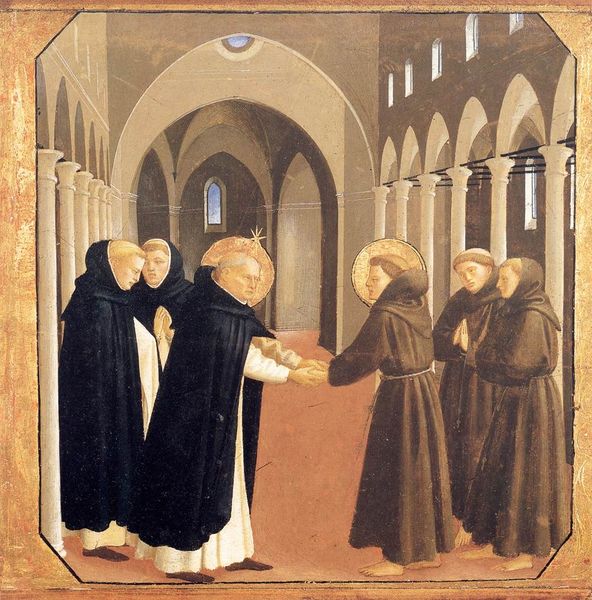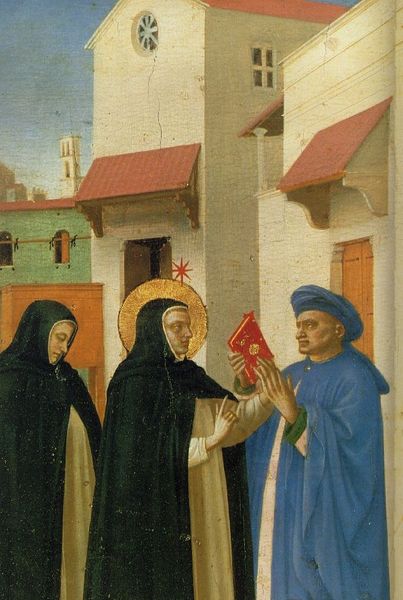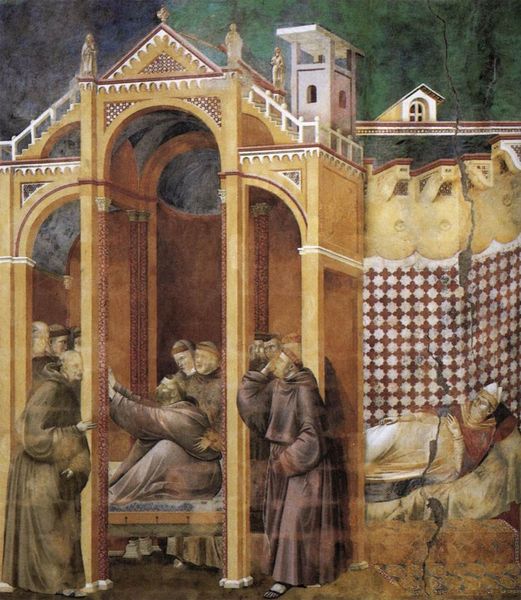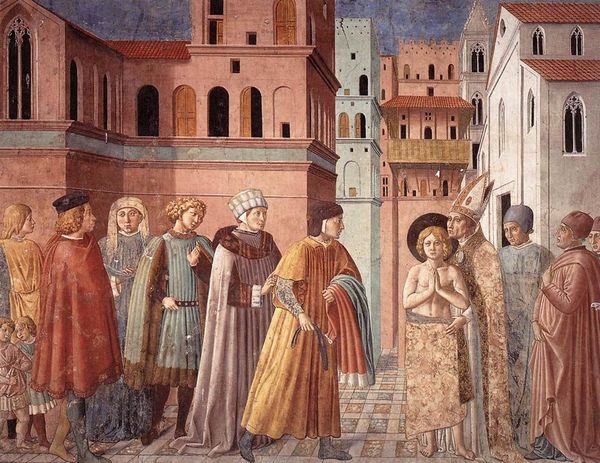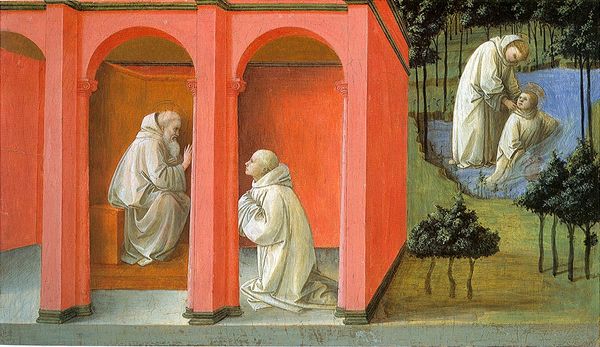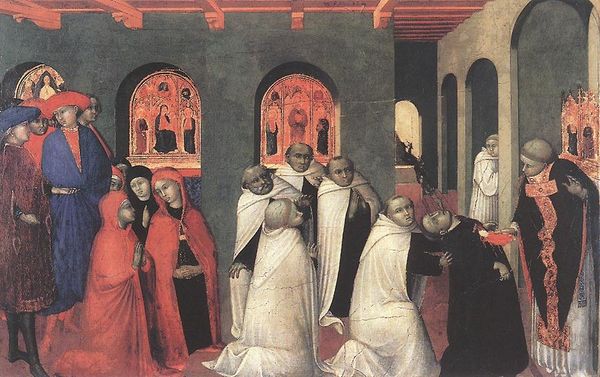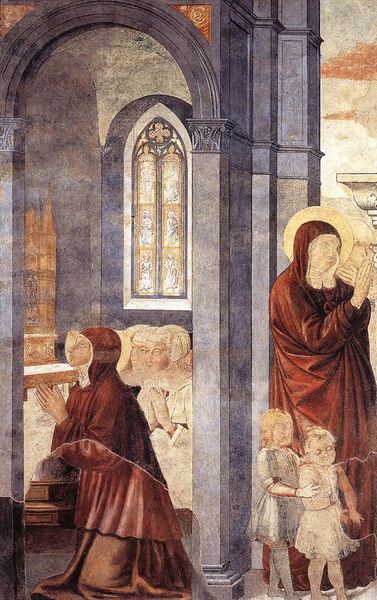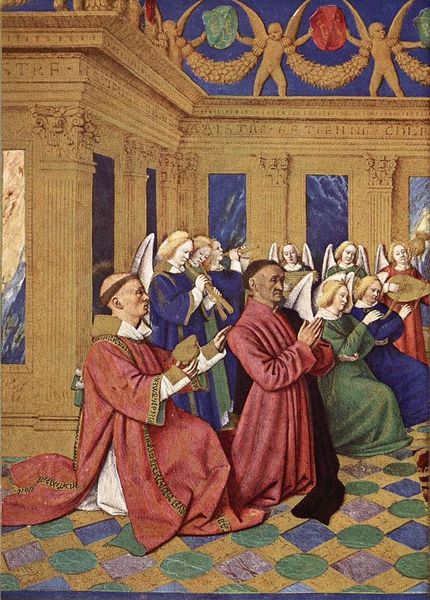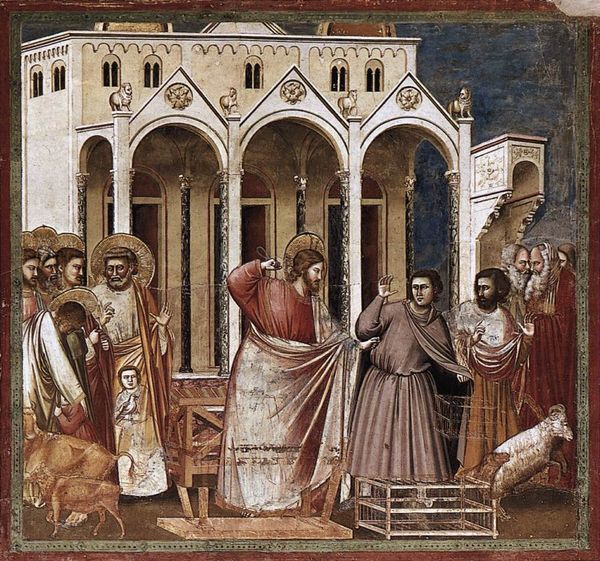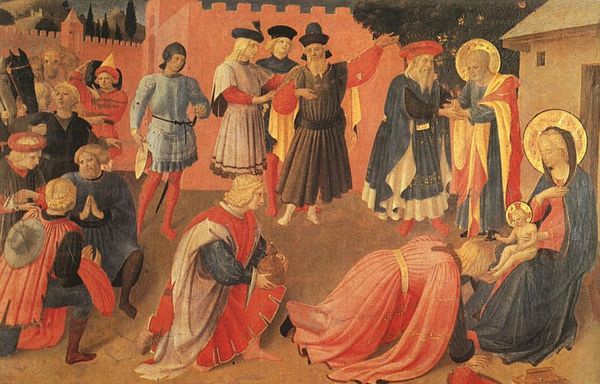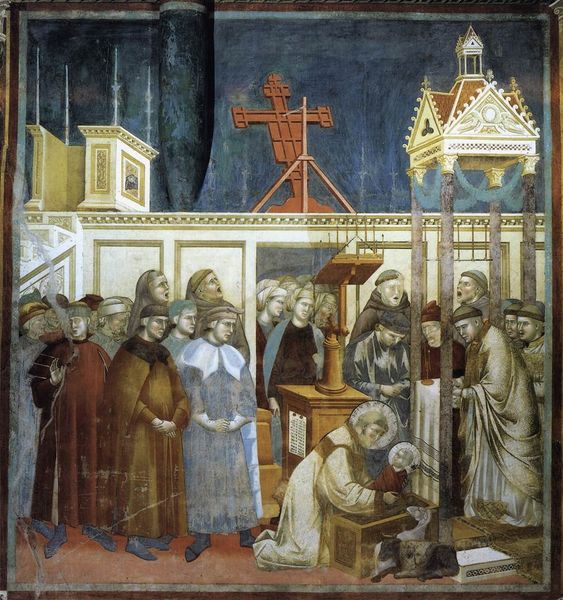
painting, oil-paint, fresco
#
portrait
#
painting
#
oil-paint
#
fresco
#
oil painting
#
underpainting
#
christianity
#
painting painterly
#
history-painting
#
italian-renaissance
#
early-renaissance
#
portrait art
Copyright: Public domain
Curator: The tempera on wood panel before us is Fra Angelico's "Meeting of St. Francis and St. Dominic," dating from around 1429. Editor: My first impression is one of serenity and balance. The pale blues and browns create a tranquil, almost ethereal atmosphere. Curator: Angelico, painting during the early Italian Renaissance, likely worked on this piece as part of a larger commission. Consider the process of tempera—ground pigments meticulously mixed with egg yolk, applied in successive thin layers. Its luminous quality perfectly suits the sacred subject matter. Editor: Yes, and look at the precise arrangement of figures. The converging gazes of the two saints create a focal point, subtly drawing the viewer's eye. The delicate brushstrokes add an almost tangible quality to their robes. There is clear intention here, especially given the golden halos around the key figures. Curator: Absolutely. The specific composition also speaks to the material conditions of the time—the need to fulfill patrons' requests, the limitations of the available materials. Were cheaper pigments used for the more background elements? How was labour organised to produce a work of such apparent serenity? Editor: One must also consider the symbolism within the forms themselves. The saints' robes denote their respective orders, yet their intertwined hands signify harmony and unity. Above, Christ enthroned suggests divine approval. Notice, too, how Angelico frames the earthly meeting with the geometric arches. Curator: I think exploring the guild system during the Renaissance, the availability of pigments, and the social function of religious art can deepen our appreciation for the work. Art was produced within specific material circumstances that shape how it functions both practically and aesthetically. Editor: An astute reminder that art isn't born in a vacuum. Reflecting on the harmony, the visual organisation of these scenes, and their connection to the human and divine – it is hard not to be captivated by Angelico's precise vision. Curator: A compelling piece in its own right that encourages us to reflect on production, class, labour, and materials in Early Renaissance Florence.
Comments
No comments
Be the first to comment and join the conversation on the ultimate creative platform.
